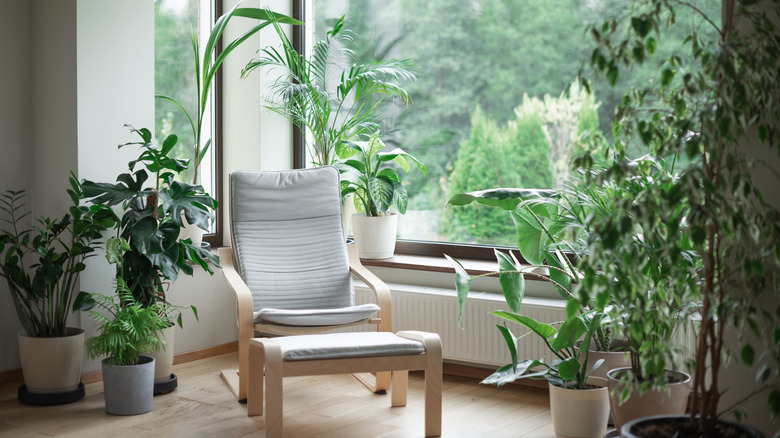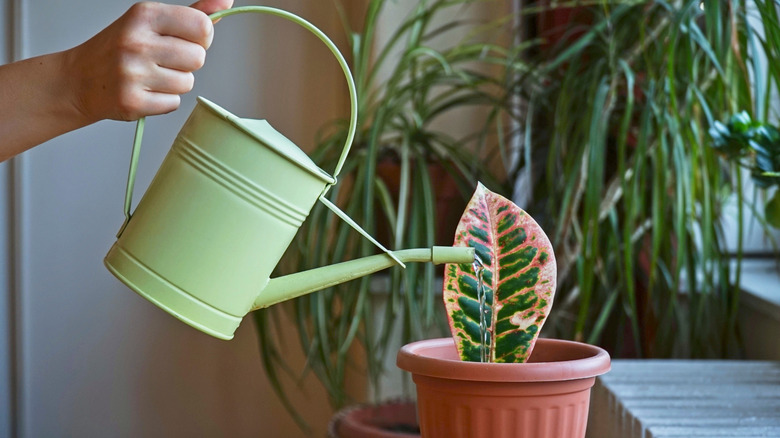Enjoy This Tropical Plant Indoors To Keep It Happy & Thriving Throughout Winter
With their striking foliage in hues of gold, green, pink, purple, and red, crotons (Codiaeum variegatum) are a fantastic evergreen shrub that brings interest and excitement to any yard. There are hundreds of cultivars to choose from, from dwarf varieties to those with intriguing markings and dots on their foliage. However, all croton cultivars have one thing in common: they need a bit of protection over the winter months.
You can grow crotons both outside and inside, depending on your climate. However, if you have had your croton outside for the warmer seasons, you may need to take this perennial plant inside for winter. As they are only winter hardy in USDA Hardiness Zones 11 and 12, many people opt to keep them inside as a houseplant year round. Crotons thrive in temperatures between 60 and 85 degrees Fahrenheit, but will usually experience leaf drop when the temperatures dip below that threshold. Frost can damage this plant, too, so moving it indoors will help to keep it healthy and happy.
How to overwinter croton plants
Crotons are sensitive to changes in their environment, so always make changes slowly and steadily. This does take some planning, so make sure you have an idea of when temperatures outside will dip below 50 degrees Fahrenheit, as this is when crotons will start to suffer. For 10 to 14 days before temperatures start to drop, place your crotons in a location with part shade if they have been in the full sun. This will get them used to receiving less light when they finally come inside. If your croton has been in a garden bed, you can lift it up and place it in a pot in the fall before moving it to a shadier location.
When the 10 to 14 days are up, examine your croton for any pests. They may occasionally have mealybugs and scales, which can be a real problem when brought inside over the winter. You might want to wash your croton plant by rinsing the foliage thoroughly when it is still outside. Once that is done, bring your croton inside and place it in a sunny location. As these plants like high humidity, you may wish to look into ways to increase humidity when they are indoors, such as placing them on a bed of wet pebbles.
Caring for your croton as a houseplant over the winter months will be a bit different from how you treated it when it was outdoors. Although crotons love regular watering during the growing season, they need much less of it in the winter. Misting can be beneficial for humidity, but water sparingly. When winter is over, make sure you harden off your croton plants before moving them outdoors for the warmer months.

